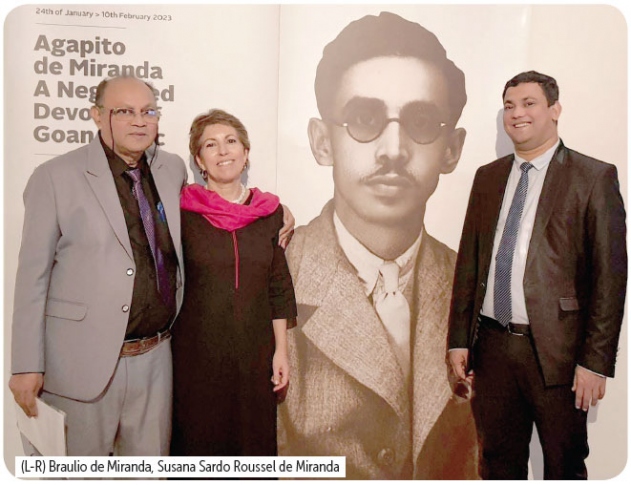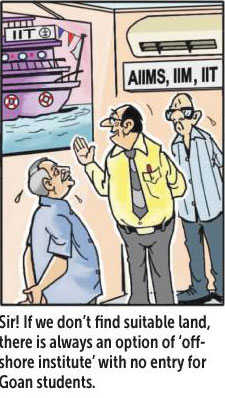
Aalokshi Awade
Carmo Gonzaga Miguel Agapito de Miranda, born in 1911, was a musician, composer, researcher, and homeopathic practitioner from Goa, who dedicated his life to documenting the cultural traditions and ethos which were mainly related to practices of Goan Catholics. He can also be considered the pioneer of Mando in Goa. Mando or Manddo is a musical form that evolved during the 19th and 20th centuries among Goan Catholics. The music has elements of both Indian and western culture. The major theme of Mandos is love, the minor ones being historical narratives, grievance against exploitation and social injustice, and political resistance during the Portuguese presence in Goa. With grace in voice and charm in costumes the performances are enhanced.
One can admire the research work by Agapito at the ‘Agapito de Miranda, a Neglected Devotee of Goan Music’, a digital exhibition organised by Fundação Oriente- Delegation of India, and the University of Aveiro. The exhibition is open to the public till February 10 from 9 am to 6 pm. The Agapito de Miranda’s digital collection comprises ten manuscripts, six of them containing musical transcriptions made by Agapito from copies of handwritten notebooks or oral sources. These manuscripts also include the author’s original compositions. The remaining four volumes compose an index of the six volumes containing transcripts, a biographical volume (genealogy), a collection of correspondence, and a set of miscellaneous writings relating to a sequence in the life and history of Goa. Apart from those, the manuscripts include documentation of concert programs, radio programs, a collection of notes on musicians and musical groups, musical sketches, conference drafts, biographical documents, letters received and sent, and press clippings published in various newspapers and flyers.
With the timeline for these manuscripts ranging from 1961-1985, this documentation makes up a total of approximately 5000 pages, which contain musical scores and their corresponding lyrics in Konkani along with ethnographic notes in Portuguese. His research was centred on Mando but also covered numerous aspects of other Goan cultural treasures. Paulo Gomes, director at the Fundação Oriente, describes this exhibition, “This work of exhibition gives a detailed emphasis on Mando, Dulpod, and Deknni.”
Susana Sardo, an associate professor of Ethnomusicology at the University of Aveiro, Portugal, and visiting professor at Goa University in Cunha Rivara Chair, has devoted approximately thirty years of her research with her team to Agapito’s current digital exhibition, along with Agapito’s family, who played a crucial role in collecting his works. She says, “I was the coordinator of a research group that also includes Eduardo Reis Falcão (Goan PhD student of ethnomusicology at the University of Aveiro) and Alvaro Sousa (designer and professor at the University of Aveiro). We are all researchers of INET-md and Alvaro is also from ID+. These are the research centers from the University of Aveiro that co-funded the project.”
Fundação Calouste Gulbenkian and the University of Aveiro prominently funded their research. Her other research interests include music in Goa and the Goan Diaspora, music and the post-colonial approach, music and the lusophonic world, including Portugal, and methodological approaches to the study of music. According to her, this digital exhibition is the most complete collection of Agapito’s work. She also states that polyphonic music was traditional before. Men used to play the violin, and women would play the mandolin. Agapito made a collection by taking down notes from the books of these women. The professor says, “I believe these manuscripts could be an interesting source of research, for the students who want to pursue their research in Mando.”
Susana first came to India in 1987, hoping to find a scope for her research in ethnomusicology. She wasn’t aware of Goan music. “The first time I heard Mando, I was surprised,” she says. “Mando got me into getting to know more of the environment and soundscape of Goa.” According to her, “Indian classical music in other parts of India is a melody, but the music in Goa, is many voices singing at the same time, and meaning different things; that’s a harmony.”
Zubin De Miranda, the grandson of Agapito de Miranda, explains this as a phenomenal experience of getting to know his grandfather, as he collected this information and work with his father, Braulio de Miranda. He says, “This whole process brought the family together while bonding us with the distant relatives as well.” He thinks that ‘Mando is a dying fad’, which now thankfully can somewhere be preserved through this exhibition, ensuring this art form gets less vulnerable and tying its roots to the history of Goan music. He also references the music, as a piece of music which is a soul mix of Portuguese and Konkani art forms and music. ‘Mando and its Presentation’, by C G M Agapito de Miranda was a book released in 2006 by his sons, Braulio, Arlindo, and grandson, Roussel De Miranda, to give a brief insight into the Goan cultural heritage. The exhibition gives a detailed insight and precise timeline of Agapito’s journey as he explored Mando while he took notes of other manuscripts.
